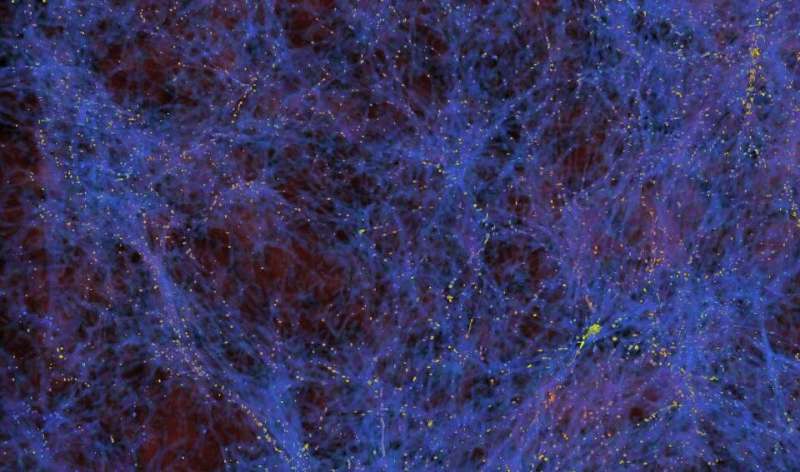A new candidate for dark matter and a way to detect it

Two theoretical physicists at the University of California, Davis have a new candidate for dark matter, and a possible way to detect it. They presented their work June 6 at the Planck 2019 conference in Granada, Spain and it has been submitted for publication.
Dark matter is thought to make up just over a quarter of our universe, with most of the rest being even-more mysterious dark energy. It cannot be seen directly, but dark matter's presence can be detected because its gravity determines the shape of distant galaxies and other objects.
Many physicists believe that dark matter is made up of some particle yet to be discovered. For some time, the favorite candidate has been the Weakly Interacting Massive Particle or WIMP. But despite years of effort, WIMPs have so far not shown up in experiments designed to detect them.
"We still don't know what dark matter is," said John Terning, professor of physics at UC Davis and coauthor on the paper. "The primary candidate for a long time was the WIMP, but it looks like that's almost completely ruled out."
An alternative to the WIMP model of dark matter calls for a form of "dark electromagnetism" including "dark photons" and other particles. Dark photons would have some weak coupling with "regular" photons.
In their new paper, Terning and postdoctoral researcher Christopher Verhaaren add a twist to this idea: a dark magnetic "monopole" that would interact with the dark photon.
In the macroscopic world, magnets always have two poles, north and south. A monopole is a particle that acts like one end of a magnet. Monopoles are predicted by quantum theory, but have never been observed in an experiment. The scientists suggest that dark monopoles would interact with dark photons and dark electrons in the same way that theory predicts electrons and photons interact with monopoles.
A new way to detect dark matter
And that implies a way to detect these dark particles. The physicist Paul Dirac predicted that an electron moving in a circle near a monopole would pick up a change of phase in its wave function. Because electrons exist as both particles and waves in quantum theory, the same electron could pass on either side of the monopole and as a result be slightly out of phase on the other side.
This interference pattern, called the Aharonov-Bohm effect, means that an electron passing around a magnetic field is influenced by it, even if it does not pass through the field itself.
Terning and Verhaaren argue that you could detect a dark monopole because of the way it shifts the phase of electrons as they pass by.
"This is a new type of dark matter but it comes with a new way to look for it as well," Terning said.
Electron beams are relatively easy to come by: electron microscopes were used to demonstrate the Aharonov-Bohm effect in the 1960s, and electron beam technology has improved with time, Terning noted.
Theoretically, dark matter particles are streaming through us all the time. To be detectable in Terning and Verhaaren's model, the monopoles would have to be excited by the Sun. Then they would take about a month to reach Earth, traveling at about a thousandth of the speed of light.
On the other hand, the predicted phase shift is extremely small—smaller than that needed to detect gravity waves, for example. However, Terning noted that when the LIGO gravity wave experiment was first proposed, the technology to make it work did not exist —instead, technology caught up over time.
More information: Detecting Dark Matter with Aharonov-Bohm, arXiv:1906.00014 [hep-ph] arxiv.org/abs/1906.00014
Provided by UC Davis





















